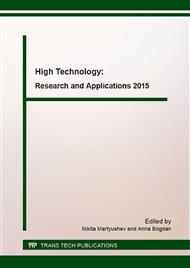[1]
M.B. Novoseltseva, E. N. Pashkov, Prospects for Further Rock Cutting Mechanisms Development, Prospects for Further Rock Cutting Mechanisms Development. 756 (2015) 47-52.
DOI: 10.4028/www.scientific.net/amm.756.47
Google Scholar
[2]
E. N. Pashkov, G. R. Ziyakaev, M. V. Tsygankova, Differential equations of processes for the hydropuls power mechanism of drill machines, Applied Mechanics and Materials. 379 (2013) 91-94.
DOI: 10.4028/www.scientific.net/amm.379.91
Google Scholar
[3]
M. V Novoseltseva, Investigation of the Influence of Hydroimpulsive Mechanism Design Parameters on the Formed Impulse, Advanced Materials Research. 1040 (2014) 682-685.
DOI: 10.4028/www.scientific.net/amr.1040.682
Google Scholar
[4]
J. D. Yang, Y. Wang, Research of Selecting Diamond Quality in Diamond Bit, Applied Mechanics and Materials, 52 (2011) 1930-(1935).
DOI: 10.4028/www.scientific.net/amm.52-54.1930
Google Scholar
[5]
X. J. Wang, X. X. Zhao, Research on the Dam Foundation Stability and Reinforcement Measures of the 12th Sluice Section of Xiangjiaba Hydropower Station, Applied Mechanics and Materials, 580 (2014) 2096-2102.
DOI: 10.4028/www.scientific.net/amm.580-583.2096
Google Scholar
[6]
X. Wei, C. Y. Wang, H. L. Yuan, Z.H. Xie, Study of Fracture Mechanism of Rock Cutting, Key Engineering Materials, 250 (2003) 200-208.
DOI: 10.4028/www.scientific.net/kem.250.200
Google Scholar


